Unit - 1
Evolution of Power Systems and Present-Day Scenario
- Electric technology became based at the awesome discovery by faraday that a converting magnetic flux creates an electric powered
- Field. Out of that discovery, grew the largest and maximum complicated engineering success of guy: the electrical energy device.
- Certainly, life with out power is now impossible. Electric power systems shape the fundamental infrastructure of a rustic. Even as
- We examine this, electrical energy is being produced at charges in extra of hundreds of giga-watts (1 gw = one million,000 w).
- Large rotors spinning at hastens to 3000 rotations in keeping with minute convey us the energy stored inside the potential energy of water, or
- In fossil fuels. Yet we note power only whilst the lights go out!
- At the same time as the fundamental capabilities of the electrical power machine have remained nearly unchanged inside the beyond century, there are
- Some good sized milestones inside the evolution of electrical power structures:
- First entire dc power machine built by using edison (1882): incandescent lamps supplied by means of steam driven dc turbines
- (electrical cable machine at 110v). 59 clients unfold over an approximate vicinity with 1.5 km radius.
- Improvement of transformers brought about supersession of dc systems by means of ac structures (why?).
- Nikola tesla - polyphase induction cars: led to improvement of ac three segment systems.
- Interconnection of systems caused standardization of frequency (why?), 60 hz in north the us and 50 hz in most
- Other international locations. Use of higher and better voltage tiers (up to a thousand kv line-line rms ac). Standardization of voltage
- Levels.
- Development of mercury arc valves, and sooner or later thyristors caused excessive voltage dc transmission (hvdc): dc
- Transmission appropriate for terribly lengthy distance bulk transmission and underwater cable hyperlinks. First commercial dc link in
- 1954.
- Numerous new trends : gasoline mills, static excitation structures, speedy acting circuit breakers, microprocessor based totally
- Relaying, use of communique technologies etc.
- Want for better utilisation and operation of ac transmission systems by way of use of high electricity electronic converters
- Advised. Several such converters at the moment are in operation.
The power gadget is the complex agency that can be subdivided into the subsequent sub-structures. The subsystems of the power device are explained underneath in details.
Generating substation:
In producing station the gasoline (coal, water, nuclear electricity, and many others.) is transformed into electric electricity. The electrical energy is generated in the variety of 11kv to 25kv, that is step-up for long distance transmission. The power plant of the producing substation is especially classified into three types, i.E., thermal power plant, hydropower plant and nuclear energy plant.
The generator and the transformer are the main components of the producing station. The generator converts the mechanical energy into electrical power. The mechanical electricity comes from the burning of coal, gasoline and nuclear gasoline, gas mills, or sometimes the inner combustion engine.
The transformer transfers the energy with very excessive performance from one level to every other. The energy switch from the secondary is about same to the primary besides for losses within the transformer. The step-up transformer will lessen losses in the line which makes the transmission of electricity over long distances.
Transmission substation:
The transmission substation incorporates the overhead traces which switch the generated electric energy from technology to the distribution substations. It only materials the big bulk of energy to bulk energy substations or very massive customers.
The transmission strains especially perform the 2 functions
It transports the energy from generating stations to bulk receiving stations.
It interconnects the 2 or extra producing stations.The neighbouring substations also are interconnected thru the transmission lines.
The transmission voltage is working at greater than 66kv and is standardised at 69kv, 115kv, 138kv, 161kv, 230kv, 345kv, 500kv, and 765kv, line-to-line. The transmission line above 230kv is normally called greater excessive voltage (ehv).
The high voltage line is terminated in substations which can be known as excessive voltage substations, receiving substations or primary substations. In excessive voltage substation, the voltage is step-all the way down to a appropriate cost for the following a part of drift closer to the load. The very huge business customers can be served directly to the transmission system.
Sub-transmission substation:
The portion of the transmission system that connects the excessive voltage substations via the step-down transformer to the distribution substations is referred to as the sub-transmission system.
The sub-transmission voltage degree degrees from 90 to 138kv. The sub-transmission system at once serves a few massive industries. The capacitor and reactor are placed inside the substations for keeping the transmission line voltage.
The operation of the sub-transmission system is similar to that of a distribution system. Its differ from a distribution machine in the following way.
A sub-transmission machine has a higher voltage level than a distribution gadget.
It resources best bigger hundreds.
It resources only some substations compared to a distribution machine which components a few loads.
Distribution substation:
The issue of an electrical power system connecting all of the consumers in an area to the majority energy sources is referred to as a distribution machine.The majority electricity stations are related to the producing substations via transmission strains. They feed a few substations which are typically located at handy points near the load centres.
The substations distribute the energy to the home, business and comparatively small clients. The consumers require huge blocks of energy which might be normally supplied at sub-transmission or maybe transmission gadget.
Whilst we cannot reuse a supply of power after the usage of it once we name them “traditional assets of energy” or “non-renewable power assets”. They're the maximum important traditional sources of electricity. These consist of coal, petroleum, natural gasoline and nuclear energy. oil is the maximum broadly used source of energy. coal, petroleum and herbal gasoline account for approximately 90% of world’s production of industrial power and hydroelectric and nuclear energy account for approximately 10%.
Types of Conventional Sources of Energy:
1)Coal:

Coal is the maximum ample conventional supply of electricity that can closing for as a minimum 200 years. It is a black-brown sedimentary rock. Formation of coal takes place whilst the stays of flora convert into lignite and then into anthracite. This entails an extended method that takes vicinity over a protracted period of time. Coal allows for diverse proposes consisting of heating of the residence, as gasoline for boilers and steam engines and for era of energy by using thermal flora. It constitutes about 70% of total industrial power consumption within the U.S.
2)Oil:
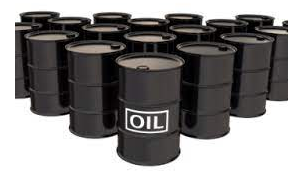
Out of all of the conventional assets of power, oil is used abundantly all over. Thinking about, oil is one of the maximum crucial conventional assets of energy in india, the sources for same are even smaller. The extraction of oil from deposits is referred to as oil resources.
3)Petroleum and natural fuel:

Petroleum is the aggregate of hydrocarbons like alkanes and cycloalkanes. In crude shape black liquid is referred to as petroleum and the formation of a natural gas occurs while the gasoline comes in touch with petroleum layer. Natural fuel is a aggregate of fifty-ninety% of methane, ethane, propane, butane, and hydrogen sulphide. After refining and purifying crude petroleum, it's miles available as petrol, diesel, lubricating oil, plastic and so forth. Natural gas is likewise creating a good sized contribution to the household area. It causes less air pollutants as compared to other fossil fuel.
4) Fuel woods:
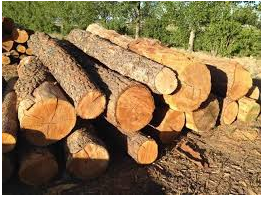
Rural humans use the fuelwood for his or her each day cooking which comes from herbal forests and plantations. The provision of fuelwood has grow to be difficult because of rapid deforestation. We will avoid this trouble by planting greater timber on degraded forest land, culturable desolate tract, barren land grazing land.
5) Thermal energy plant:
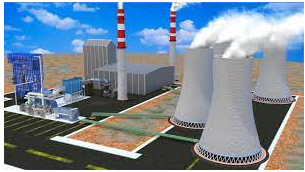
Power stations burn a massive wide variety of fossil fuels to warmness up water, to supply steam, which in addition runs the turbine to generate electricity. Transmission of power is more green than, transporting coal or petroleum over the same distance. It's miles referred to as because the thermal plant because gas is burnt to produce heat power that is converted into electrical electricity.
6) Nuclear energy:
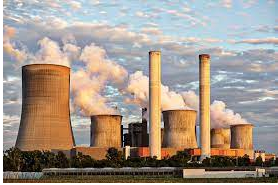
A small quantity of radioactive substance can produce a variety of electricity via the nuclear materials all over the international. So as to attain nuclear energy, nuclear reactions are vital and there are about 300 nuclear reactions.
Nuclear power is one of the maximum environmentally pleasant conventional resources of power because it produces fewer greenhouse gas emissions at some point of the production of energy in assessment to assets like coal electricity plant life. Despite the fact that in case of accidents, this same nuclear electricity releases in high amount in the environment. Additionally, the nuclear waste that remains is radioactive and hazardous.
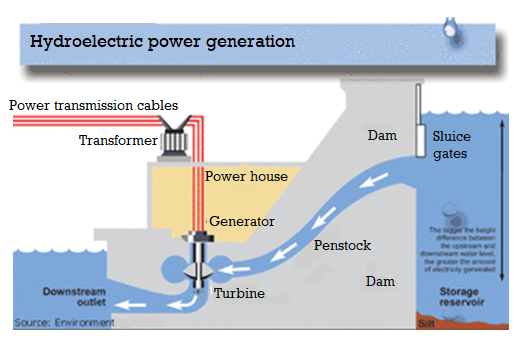
Hydroelectric and coal-fired energy plants produce energy in a similar way. In both cases a energy supply is used to turn a propeller-like piece referred to as a turbine, which then turns a metal shaft in an electric powered generator, which is the motor that produces electricity.
A coal-fired electricity plant uses steam to show the turbine blades; whereas a hydroelectric plant makes use of falling water to turn the turbine. The effects are the identical.
The principle is to construct a dam on a large river that has a huge drop in elevation (there are not many hydroelectric vegetation in kansas or florida). The dam shops lots of water at the back of it in the reservoir.
Near the bottom of the dam wall there may be the water intake. Gravity causes it to fall thru the penstock in the dam. On the quit of the penstock there is a turbine propellor, which is became by the shifting water. The shaft from the turbine is going up into the generator, which produces the electricity. Power strains are connected to the generator that carry power to your own home and mine. The water keeps past the propellor through the tailrace into the river beyond the dam. Through the way, it isn't always a terrific concept to be gambling inside the water right beneath a dam whilst water is launched!
A turbine and generator produce the electricity:
As to how this generator works, the corps of engineers explains it this way:
"a hydraulic turbine converts the strength of flowing water into mechanical electricity. A hydroelectric generator converts this mechanical energy into power. The operation of a generator is based totally at the standards determined by using faraday.
He determined that when a magnet is moved beyond a conductor, it causes energy to drift. In a large generator, electromagnets are made by way of circulating direct current through loops of wire wound around stacks of magnetic metal laminations. Those are referred to as discipline poles, and are installed on the perimeter of the rotor.
The rotor is hooked up to the turbine shaft, and rotates at a hard and fast velocity. While the rotor turns, it reasons the sphere poles (the electromagnets) to move beyond the conductors hooked up within the stator. This, in turn, reasons strength to waft and a voltage to increase on the generator output terminals."

Pumped storage: reusing water for height electricity demand:
Demand for electricity isn't always "flat" and consistent. Demand is going up and down for the duration of the day, and overnight there may be much less need for energy in homes, organizations, and different centers. For example, right here in atlanta, georgia at 5:00 pm on a warm august weekend day, you may wager there is a large call for for electricity to run thousands and thousands of air conditioners! However, 12 hours later at 5:00 am .... Not so much. Hydroelectric vegetation are extra efficient at imparting for height strength needs all through short durations than are fossil-gasoline and nuclear energy plants, and one manner of doing this is by the usage of "pumped garage", which reuses the identical water more than once.
Pumped garage is a technique of retaining water in reserve for peak period power needs through pumping water that has already flowed through the generators again up a garage pool above the strength plant at a time while consumer call for for electricity is low, inclusive of at some point of the midnight. The water is then allowed to go with the flow lower back thru the turbine-generators at times when demand is excessive and a heavy load is positioned at the system.

Pumped storage: Reusing water for peak electricity demand
The reservoir acts just like a battery, storing energy within the form of water whilst needs are low and generating maximum electricity all through each day and seasonal top intervals. An advantage of pumped garage is that hydroelectric producing gadgets are able to start up quick and make speedy changes in output. They function efficaciously when used for one hour or several hours. Due to the fact pumped storage reservoirs are extraordinarily small, creation fees are usually low in comparison with conventional hydropower centers.
Thermal power plants additionally called thermal energy generation plant or thermal energy station. A thermal electricity plant / station is used to convert heat power to electric energy / electricity for family and business programs. In the manner of electrical strength era, steam-operated turbines convert warmth in to mechanical strength after which finally electric electricity.
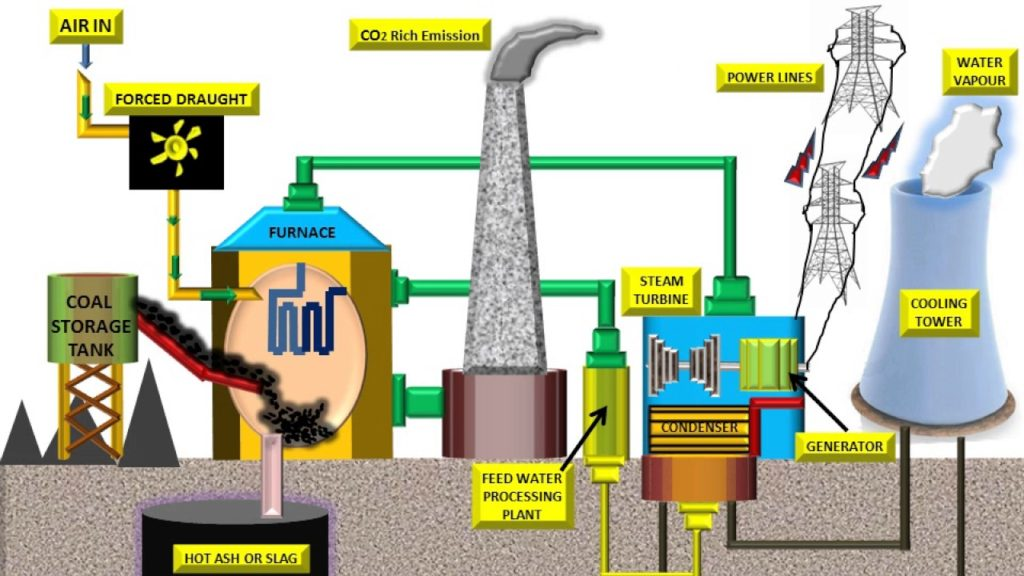
In thermal electricity flowers, the warmth power received from combustion of solid gasoline (by and large coal) is used to convert water into steam, this steam is at high pressure and temperature.
This steam is used to rotate the turbine blade turbine shaft is hooked up to the generator. The generator converts the kinetic strength of the turbine impeller into electric energy.
The gas is transported from mines through trains to the gas garage facility in a power plant. The fuel transported to the plant is usually bigger in particle size and earlier than it's far fed to the boiler furnace it's far damaged down into smaller portions the usage of crushers. The gasoline is then fed to the boiler producing a massive amount of combustion heat.
Then again dealt with water unfastened from impurities and air is fed to the boiler drum where the combustion warmness from the fuel is transferred to water to convert it into excessive strain and temperature steam.
Usually, flue gases from the boiler exhaust are at excessive temperature and if this warmth isn't always utilized will cause a huge number of losses ensuing in reduced boiler efficiencies.
So typically this waste warmth is recovered through heating either air required for combustion or preheat water earlier than sending it right into a boiler.
Flue gases are then allowed to bypass thru a dirt collector or a bag clear out to arrest dust particles for you to prevent air pollutants before sending it to the environment via a chimney.
Fuel storage and handling plant:
The maximum important a part of any electricity plant is to shop the gasoline adequately in the best amount in order that the plant can run smoothly in normal days in addition to whilst the supply of gas from mines is fallacious. So a gas storage facility is defined in a plant to shop an adequate amount of gasoline.
In a thermal power plant process, the first step in process of electricity generation is that the gasoline is brought to breaker house with the help of belt conveyor, here light dust is separated with the assist of rotary machine via the action of gravity.
It similarly is going to the crusher where it's far overwhelmed to a length of about 50mm.
Water remedy plant:
In thermal energy, plant water is used in large quantity this water is converted into steam and used to rotate the turbine so this water and steam come into direct contact with the boiler, boiler tubes, boiler accessories, and turbine blades.
Regular water is taken from the river, nicely incorporates a whole lot of dust, suspended particulate depend (spm), dissolved minerals and dissolved gases which include air etc. If the water fed to the boiler isn't handled then it'll reduce the lifestyles and performance of device by way of corroding the surfaces and scaling of device which may additionally cause overheating of stress components and explosions.
Suspended depend from the water is removed with the aid of including alum into the water tank through gravity separation. Addition of alum coagulates the suspended debris and due to an boom inside the density, it settles at the lowest of the tank through gravity.
After gravity separation, water softening is finished by using ion trade method. As the hardness comes via the carbonates and bicarbonates of sodium and magnesium, these salts are removed from water anion change and cation exchange manner.
Water also contains dissolved oxygen and this leads to corrosion and fouling of boiler tubes and surfaces when it comes of their touch. So casting off dissolved oxygen from water is carried out with the aid of including oxygen scavengers and by means of the use of a deaerator tank.
Deaerator tank additionally acts as a feed water tank to shop the feed water. On heating feed water in a deaerator tank decreases the solubility of air in water, thereby doing away with the dissolved air from the water.
“Thermodyne components both water softeners and deaerator tanks to enhance the quality of your feed water to the boiler as this improves the lifestyles and performance of your boiler and its device.”
Steam boiler
A boiler is a pressure vessel which is used to generate excessive-strain steam at a saturated temperature. At this high strain and temperature generally, bi-drum water tube boilers are used.
Thermodyne engineering systems manufactures water tube boilers of numerous sizes and capacities which could run on diverse fuels.
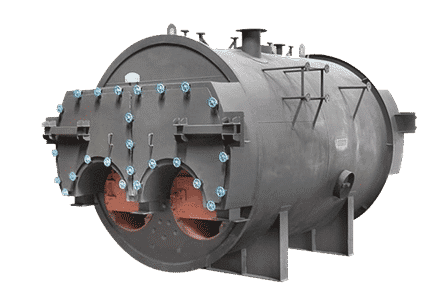
Water-tube boiler consists of a furnace enclosed via the water tubes membrane. The crushed gasoline from the crushers is fed into the boiler furnace over the grate.
The hot air from the pressured draft (fd) fan is mixed with the beaten gasoline causing combustion of gas.
Combustion of fuel generates a number of radiation warmness that is transferred to water within the membrane tubes. Flue gases generated at some stage in combustion travel at excessive pace across the convection bank of tubes thereby heating water through convection heat transfer. Hot water is sent to a boiler drum at high pressure via the feed-water pump
The boiler tubes that are in contact with low temperature acts as downcomers to circulate the water while the tubes that are in contact with high temperature acts as risers to carry steam.
This ends in a powerful movement of water thereby stopping the tubes from getting overheated.
The steam leaving the boiler is at saturated temperature and pressure but there are lots of heat losses in the course of its transportation to the generators.
So as to increase the high-quality of steam, steam superheater is installed in a radiate section of a boiler to boom its temperature and dryness fraction without growing its strain as well as to accommodate for the transportation temperature losses.
The exhaust gases leaving the boiler are usually at high temperature and this waste warmth is extracted by means of installing an economizer or water preheaters to preheat the feed water to the boiler and air preheaters to pre-warmth the air coming from the forced draft fan required for the combustion of gas.
Installing this gadget assist to decrease the flue gas temperature thereby growing the efficiency.
The flue gases leaving the boiler additionally contain some ash particles, so that you could reduce the air pollution, flue gases are allowed to skip via the dust collectors and bag filters to dispose of the ash particulates from the flue gases and are sometimes handed via the moist scrubbers to lower the sulfur content from the gases.
The flue gases are drawn via this gadget the usage of an caused draft (id) fan that's designed for a hard and fast potential and head to save you any backpressure. After the id fan, flue gases are exhausted off into the ecosystem the use of a chimney.
Turbine
A turbine is a mechanical device which converts the kinetic and stress strength of steam into beneficial paintings. From the superheater steam goes to the turbine wherein it expands and loses its kinetic and strain energy and rotates the turbine blade which in flip rotates the turbine shaft linked to its blades. The shaft then rotates the generator which converts this kinetic electricity into electric strength.
The heat energy in the nuclear electricity plant may be generated thru a nuclear reaction or nuclear fission. The heavy elements of nuclear fission are uranium/thorium is finished inside a special device called a nuclear reactor. A large quantity of energy can be generated due to nuclear fission. The relaxation components within the nuclear, as well as conventional thermal plants, are the equal.
The fission of one kg uranium generates heat electricity that's equal to the strength generated via 4500 heaps of high-grade coal. This notably decreases the gas transportation price, so it's miles a chief gain of these plants. Worldwide, there are massive deposits of fuels present; therefore, those flora can deliver electric strength constantly for masses of years. Nuclear energy vegetation generate 10% of the energy from the complete strength inside the global
Definition:
The power plant that is used to heat the water to generate steam, then this steam may be used for rotating massive generators for generating strength. These vegetation use the heat to heat the water which is generated by using nuclear fission. So the atoms in the nuclear fission will split into unique smaller atoms for generating strength. The nuclear energy plant diagram is proven beneath.
Nuclear electricity plant working principle:
In the power plant, the fission takes area inside the reactor and the middle of the reactor is known as the middle that consists of uranium gas, and this will be fashioned into pellets of ceramic. Every pellet generates 150 gallons of oil strength. The whole energy generated from the pellets is stacked in metal gas rods. A gaggle of these rods is referred to as a gasoline assembly and a reactor core includes several fuel assemblies.

All through nuclear fission, the warmth may be generated inside the center of the reactor. This heat may be used to warm the water into steam in order that turbine blades may be activated. As soon as the turbine blades activated then they pressure the generators to make power. In a electricity plant, a cooling tower is available to chill the steam into the water in any other case they use the water from special sources. Subsequently, the cooled water can be reused to generate steam.
Components of nuclear energy plant:
Within the above nuclear energy plant block diagram, there are exclusive additives which encompass the following.
- Nuclear reactor
In a strength plant, a nuclear reactor is an critical factor like a warmness supply that includes the gas & its reaction of nuclear chain inclusive of the waste merchandise of nuclear. The nuclear fuel used within the nuclear reactor is uranium & its reactions are heat generated in a reactor. Then, this heat can be transferred to the coolant of the reactor to generate heat to all of the parts inside the strength plant.
There are specific forms of nuclear reactors that are used in the manufacturing of plutonium, ships, satellites & plane for studies as well as clinical purposes. The energy plant includes now not most effective consists of the reactor and additionally includes turbines, mills, cooling towers, an expansion of protection structures.
- Steam generation
In all of the electricity flowers, the manufacturing of steam is well known; however, the way of generating will trade. Most of the flora use water reactors via the usage of two loops of rotating water to generate steam. The primary loop incorporates very warm water for heating an alternate as soon as water at a low-strain is circulated, then it warms the water to generate the steam to transmit to the turbine section.
- Generator & turbine
As soon as the steam is generated, then it travels with high pressures to hurry up the turbine. The rotating of the turbines may be used to rotate an electric generator for generating strength this is transmitted to the electrical grid.
- Cooling towers
In a nuclear strength plant, the maximum crucial part is a cooling tower which is used to reduce the heat of the water. Please discuss with this link to recognise greater about what's a cooling tower – components, creation & applications
Working of nuclear power plant:
The elements like uranium or thorium are sued nuclear fission response of a nuclear reactor. Because of this fission, a massive quantity of warmth electricity can be generated and it's far transmitted to the coolant reactor. Right here, the coolant is nothing however water, liquid metallic in any other case fuel. The water is heated to flow in a warmth exchanger in order that it modifications into excessive-temperature steam. Then the steam that is produced is allowed to make a steam turbine run. Once more the steam may be modified back into the coolant & recycled to apply for the warmth exchanger. So, the turbine and alternator are linked to produce strength. By way of the usage of a transformer, the electricity that is produced may be expanded to apply in lengthy-distance communique.
The efficiency of the nuclear electricity plant:
The nuclear power plant performance can be determined similarly to other heat engines due to the fact technically the plant is a huge warmness engine. The sum of electric energy generated for each unit of thermal power will offer the plant is thermal efficiency & due to the thermodynamics 2nd law, there is a higher limit to how efficient these strength plants may be.
The regular nuclear energy flora attain efficiencies about 33 to 37%, equivalent to fossil-fueled plants. Excessive temperature & extra present-day designs such as the generation iv reactors could accumulate above forty five% efficiency.
Types of nuclear electricity plant
There are two kinds of nuclear strength vegetation which include pressurized water reactor and boiling water reactor.
1) Pressurized water reactor
In this form of reactor, normal water is used as a coolant. This is stored at extraordinarily high force so that it does now not get a boil. A warmness exchanger on this reactor transfers the heated water where the water from the secondary coolant circle is changed into vapor. Therefore, this loop is definitely free from the material of radioactive. In this reactor, the coolant water works as a moderator. Because of these blessings, these reactors are used most regularly.
2) Boiling water reactor
In this type of reactor, an unmarried coolant loop is handiest to be had. The water is permissible to heat inside the reactor. The steam is produced from the reactor whilst it heads out from the reactor & the steam will flow for the duration of the steam turbine. The main downside of this reactor is, the coolant water procedures the fuel rods & the turbine. So, radioactive material can be placed over the turbine.
Site selection for nuclear electricity plant
The selection of the site for nuclear power point may be done with the aid of thinking about the technical requirement. The arrangement and operating of a nuclear energy plant mainly depend upon the traits of the web page.
At the same time as designing the plant, the dangers from the site ought to be taken into consideration. The plant layout has to handle with first-rate herbal occurrence & human-caused actions, without negative the operational safety of the plant.
Every website online has to give wanted requirements like discarded and decay warmth sinks, power deliver availability, excellent communications and efficient crisis control, and many others. For a power plant, the estimate of the site generally occupies extraordinary ranges like choice, characterization, pre-operational, and operational.
Nuclear power plants in India
There seven nuclear energy plants in India which include the subsequent.
Kudankulam nuclear electricity plant, placed in Tamil Nadu
Tarapur nuclear reactor, located in Maharashtra
Rajasthan atomic power plant, located in Rajasthan
Kaiga atomic electricity plant, placed in Karnataka
Kalapakkam nuclear electricity plant, located in Tamil Nadu
Narora nuclear reactor, placed in Uttar Pradesh
Kakarapar atomic power plant, positioned in Gujarat
Advantages:
It uses much less space compared with different strength flora
It's far extraordinarily low cost and generates huge electric energy.
Those plant life are located close to the burden middle due to the fact there's no requirement of large gas.
It generates a massive amount of strength inside the process of each nuclear fission
It makes use of less gas to generate large energy
Its operation is reliable
Whilst in comparison with steam energy flora, it's miles very easy and neat
The operating fee is small
It doesn’t produce polluting gases
Disadvantages:
The disadvantages of nuclear power plant life encompass the subsequent.
The price of number one installation is extraordinarily high whilst in comparison with other strength stations.
The nuclear gasoline is high priced so recuperating is hard
Excessive capital fee compare with other electricity flora
Technical understanding is needed to function this plat. So maintenance, as well as earnings, may be high.
There is a chance of radioactive pollution
The response isn't always efficient
The requirement of cooling water is double evaluate with a steam electricity plant.
Applications:
The application of nuclear electricity plants include the subsequent.
Nuclear power is utilized in unique industries everywhere in the global for desalination of ocean water, manufacturing of hydrogen,
district cooling/heating,
the removal of tertiary oil assets
utilized in warmth method programs like cogeneration,
conversion of coal to beverages
help within the chemical feedstock synthesis.
References:
[1] J. Grainger and W. D. Stevenson, “Power System Analysis”, McGraw Hill Education,
1994.
[2] O. I. Elgerd, “Electric Energy Systems Theory”, McGraw Hill Education, 1995.
[3] D. P. Kothari and I. J. Nagrath, “Modern Power System Analysis”, McGraw Hill
Education, 4th Edition, 2011.
[4] B. M. Weedy, B. J. Cory, N. Jenkins, J. Ekanayake and G. Strbac, “Electric Power
Systems”, Wiley, 5th Edition, 2012.
[5] C.L. Wadhwa, “Electrical Power Systems”, New Age International Publishers, 6th
Edition.
[6] A. R. Bergen and V. Vittal, “Power System Analysis”, Pearson Education Inc, 1999.